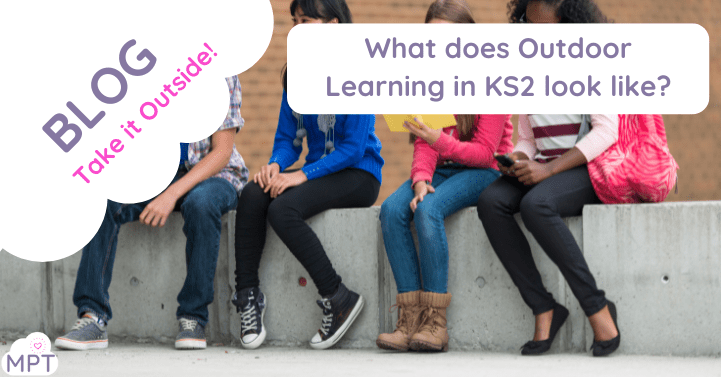What does Outdoor Learning in KS2 look like?
Step outside the classroom and into a world of limitless possibilities! In this guide, we’ll explore the power of outdoor learning in Key Stage 2 (KS2) and how it can revolutionize student engagement and education. Outdoor learning is not just about getting fresh air; it’s about creating an immersive and stimulating environment that ignites curiosity, fosters creativity, and enhances academic achievement. Research shows that incorporating outdoor learning into the curriculum improves students’ motivation, concentration, and well-being. From hands-on science experiments to interactive history lessons, the great outdoors can be transformed into a captivating classroom where students actively participate in their education. This article will delve into various strategies for effectively implementing outdoor learning in KS2, including curriculum integration, lesson planning, and assessment methods. We’ll also provide practical tips and resources to help teachers get started and overcome potential challenges. So, if you’re ready to unlock the potential of outdoor learning and create an unforgettable educational experience for your students, read on!
Outdoor Learning in KS2: Engaging Activities Using the Muddy Puddle Teacher Approach
Outdoor learning for KS2 students offers a dynamic way to cover core subjects through hands-on experiences, fostering both academic and personal growth. Using the Muddy Puddle Teacher (MPT) approach, educators can take learning outside to stimulate curiosity, support wellbeing, and create a deeper connection with nature. Here are some inspiring outdoor learning ideas that integrate KS2 curriculum goals with nature-based activities.
1. Maths in Nature: Multiplication and Division
Take maths outside by using natural items like stones, leaves, and sticks to create multiplication and division arrays. For example, have students form groups of items to visually understand concepts like “3 x 4” or “12 ÷ 4.” This tangible approach enhances understanding of abstract math concepts.
- More outdoor maths activities on NRICH Maths.
2. Science: Exploring Habitats and Ecosystems
Take students on a nature walk to observe local habitats and ecosystems. Discuss different animal adaptations and how plants and animals coexist within their environment. You could even create a mini habitat in the school grounds.
- For more on habitats, see BBC Bitesize.
3. Art in Nature: Creating Land Art
Encourage students to gather natural materials like twigs, leaves, and stones to create temporary art pieces outdoors. This form of “land art” connects students to nature while enhancing their creativity and observational skills.
- Find nature art inspiration on The Woodland Trust.
4. Outdoor Literacy: Storytelling with Natural Props
Let students use nature as inspiration for creative writing or storytelling. They can use props like stones, sticks, and leaves as characters or elements in their stories, encouraging imaginative thinking and literacy skills.
- For storytelling activities, visit Storytelling Schools.
5. Geography Skills: Map Reading and Orienteering
Set up an orienteering course where students must use a map and compass to navigate. This activity helps with geography skills, such as understanding coordinates, reading maps, and using directional language.
- Explore orienteering ideas on British Orienteering.
6. Teamwork and PE: Outdoor Obstacle Courses
Use natural resources like logs, stones, and hills to set up a physical obstacle course. This promotes teamwork, physical exercise, and resilience, which are key to developing emotional and social skills.
- More outdoor PE ideas from Teach Active.
7. Mindfulness in Nature
Start a mindfulness session where students sit quietly and focus on sounds, sights, and smells around them. This quiet time helps with mental wellbeing and fosters a deeper connection to the natural world.
- Discover mindfulness activities on Mindful.
8. Environmental Science: Recycling and Sustainability
Organize a litter pick around the school or local area and discuss the importance of recycling. Have students observe how rubbish impacts the environment and think about ways to reduce waste.
- More on sustainability for kids on Eco-Schools.
9. Weather Observations
Get students involved in observing and recording weather patterns over time. This activity can tie into science and geography lessons, helping students understand climate, weather changes, and the water cycle.
- Find resources on weather tracking at Met Office.
10. Maths in Motion: Measuring Distances
Teach measurement by having students measure distances between trees, plants, or playground equipment using rulers, tape measures, or footsteps. It’s a practical, hands-on way to understand length and perimeter.
- Explore measuring activities on NRICH Maths.
11. Creative Science: Shadow Experiments
On a sunny day, teach students about light and shadows by observing how shadows move and change shape over time. This hands-on experiment connects with science concepts in a real-world context.
- See more light experiments on STEM Learning UK.
12. Nature Journaling
Equip students with journals to document their outdoor learning experiences. They can record observations, sketches, and reflections on nature, blending science, art, and literacy in one activity.
- Nature journaling ideas on National Geographic Kids.
13. Role-Play History Lessons
Use outdoor spaces to reenact historical events, like the Gunpowder Plot or Viking invasions. This makes history interactive and memorable, bringing the past to life in an engaging way.
- Historical role-play ideas from English Heritage.
14. Life Cycles Exploration
Set up a butterfly or plant life cycle observation area. Students can track the growth of plants or watch caterpillars turn into butterflies, connecting with life sciences in a tangible way.
- Find life cycle resources on Royal Horticultural Society.
15. Tree Identification and Classification
Teach students to identify and classify local trees based on leaf shape, bark texture, and size. This ties into biology and helps students appreciate local flora.
- Explore tree identification guides on The Woodland Trust.
Benefits of the Muddy Puddle Teacher Approach
The Muddy Puddle Teacher approach enhances learning by turning nature into a classroom. Taking lessons outdoors helps children develop resilience, creativity, and critical thinking. According to Teach Early Years, children who engage in outdoor learning tend to show higher levels of engagement and motivation. Incorporating outdoor learning also improves wellbeing, as children connect with nature, experience reduced stress, and enjoy more physical activity.
Additional resources on outdoor learning can be found at Outdoor Classroom Day and Natural England, both of which advocate for using natural spaces in education.
By taking subjects like science, geography, literacy, and maths outside, the Muddy Puddle Teacher approach transforms learning into an active, memorable experience. It’s a practical way for teachers to bring their KS2 curriculum to life while promoting physical activity and environmental awareness.


